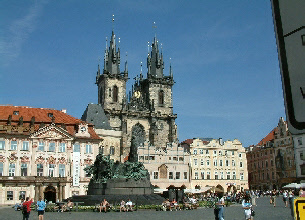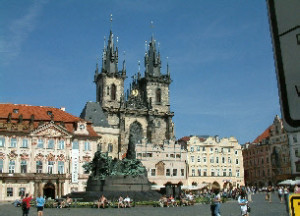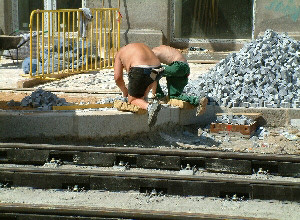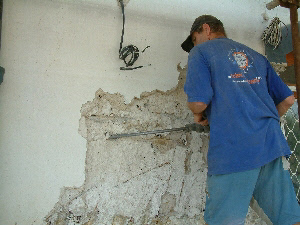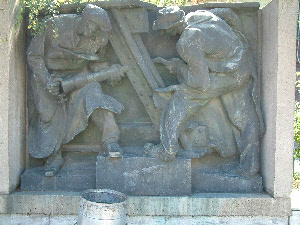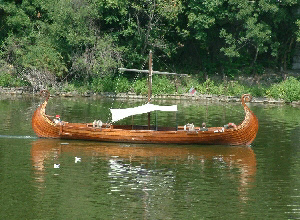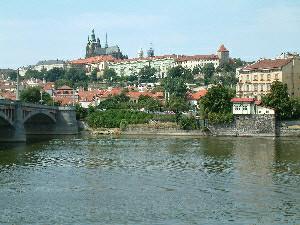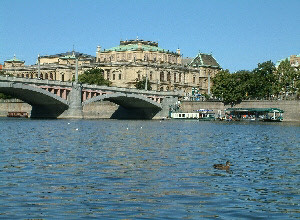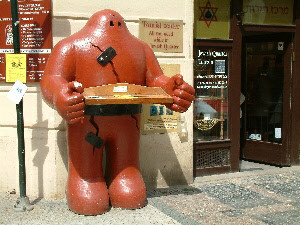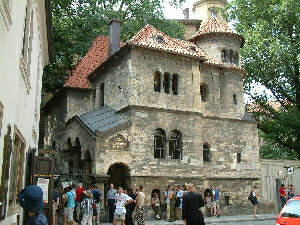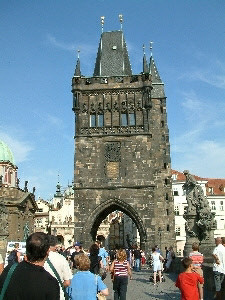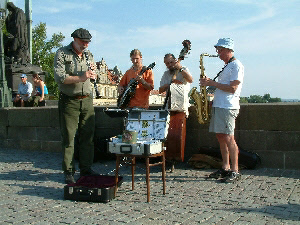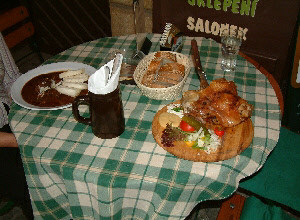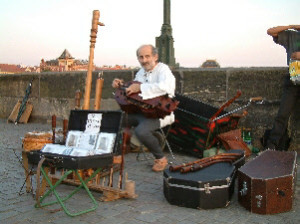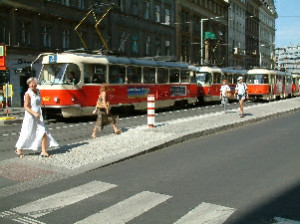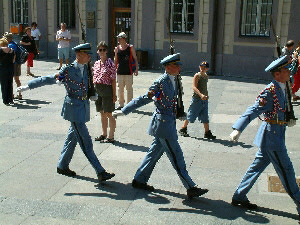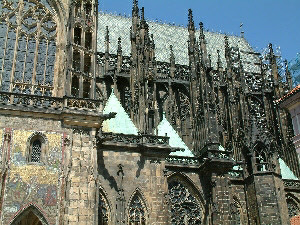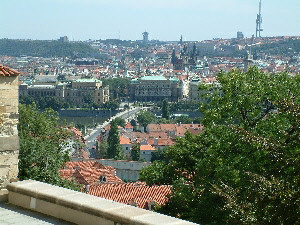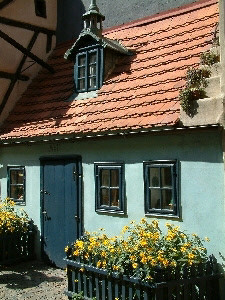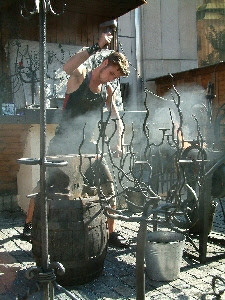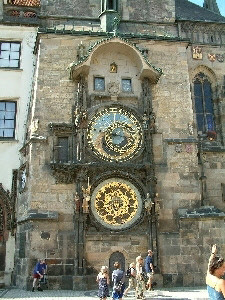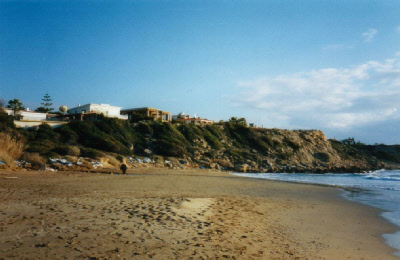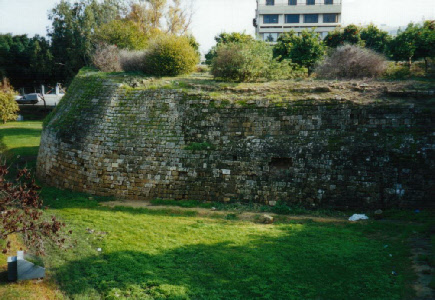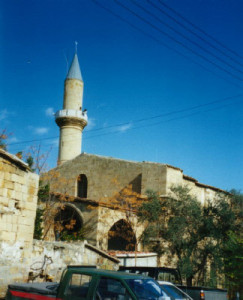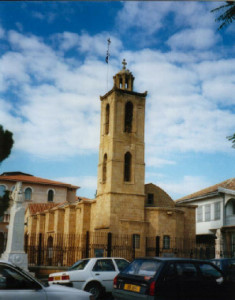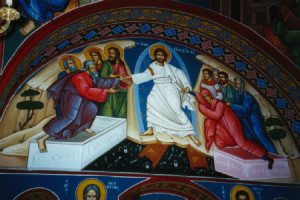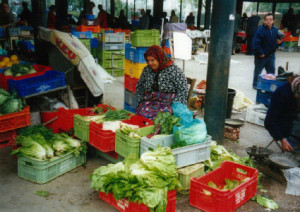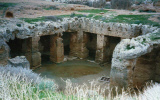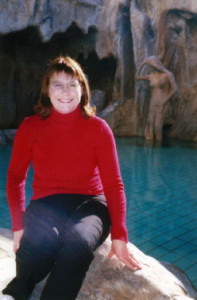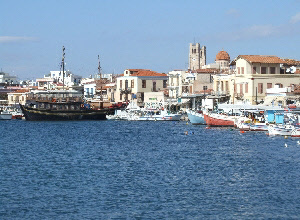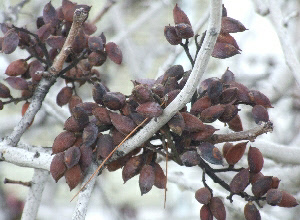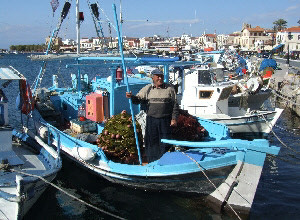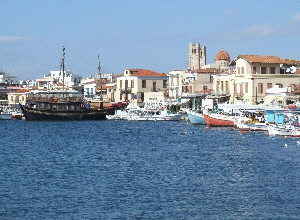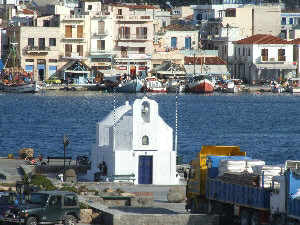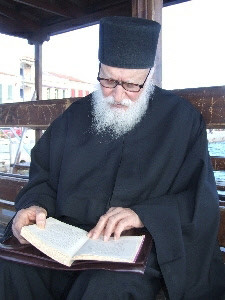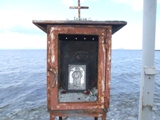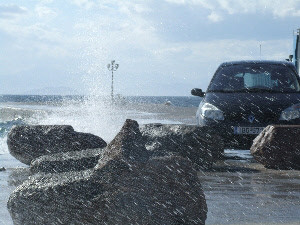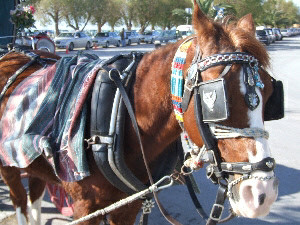4 Nov 2001
Dear Mum and Dad
Thank you very much for your letter re Mum’s jersey; I’m very pleased it has arrived at last and we’re also delighted that she likes it. It’s certainly a nice warm material and we hope she gets lots of use from it. She can tell anyone who wants to know that it came from St Albans and it’s English made so it will do very nicely for any New Zealand winter. It’s also a lovely colour and style, isn’t it?
Ivor came home last Wednesday and we went to see him yesterday afternoon. He’s pretty tired, as you would expect after such a big operation, and he says he’s still very sore under his right lower ribs which were cut during the op, but he has good colouring in his face and he’s very cheerful and happy to be home. He said the doctor ascribed his lack of appetite to having a very small stomach these days, but he actually looks much better without his pot and I’m sure he’s healthier for that. He’s eating a little, drinking a little and sleeping a lot, but he’s home and independent and looking forward to getting out and doing things. No-one knows if they’ve beaten his cancer, but for the moment we are all hopeful since none of his tests so far show any sign of it lingering. We took him a card to welcome him home and had a cup of tea with him and Iris while we listened to stories of his adventures in hospital.
We also took three things to show him and Iris. The first thing was my Blackfriars sheep – I’ve called her Geraldine. She is a knitted toy about 8inches long and tightly stuffed so she is quite fat. She has a white (woollen, of course) body, black legs and tail and a black head with a slightly cross-eyed but very appealing expression.
There is this late middle-aged, skinny, faded blonde woman with broken teeth and a ring in her lower lip who sits under a blanket in the mornings at the foot of one of the stairways in Blackfriars Station and she makes knitted stuffed toys. One of her toys is a most beautiful black-faced sheep and I thought “I got a Paddington Bear from Paddington Station, so what about a Blackfriars sheep?” When I asked her if I could have one she said that all the ones she had there were already sold, but to pick mine up on Friday. Other people who sit at the foot of railway station stairs are just beggars, but she works very hard to make beautiful little toys.
The next thing we showed him was Iris’ present for Elaine’s 50th fully stretched, framed and ready to hang on the wall. Iris has spent more than A YEAR making a cross-stitch entitled Saint Albans and it’s a diagrammatic map of all the major elements of St Albans and its predecessor, Verulamium. So there is the city coat of arms, the Roman theatre, the Abbey Church and Cathedral, the clock tower, the Fighting Cocks pub, Kingsbury Mill; in short all the places we know well and go to often. Elaine never knew or even suspected that Iris was doing anything and Iris told her that every time we were coming to see them Iris had to sweep her handiwork away so Elaine wouldn’t find out. The work is exquisite and it looks so beautiful in its gold frame on our wall.
When Iris gave Elaine her cross-stitch, it was rolled around a cardboard drum and when we asked her where we should go to get it framed she said to ask the man in the paintings stall in St Albans market to do it for us. We bought a small RF Carter print of The Fighting Cocks pub for Elaine’s brother, Gordon and I asked one of the men on the stall if I could get a print of the cathedral, because I have very much admired Carter’s watercolour paintings of the St Albans area, and there wasn’t one on display. He said he’d have one for me if I came back the next weekend.
“Oh, do you know him, then?” I said. “You’re talking to him,” he said. So boldly I asked him if he would paint the cathedral for me and when he gave me a price it was quite reasonable, so we agreed. He framed his picture with the same frame and gave it to us at the same time as we got back Iris’ cross-stitch. So the third thing we showed Ivor was our fabulous water-colour of the magnificent Norman church of St Albans Abbey. It is absolutely beautiful.
We also went down to the clock tower to see if there was anything interesting happening at the other end of the market. The clock tower was built in about 1405 and it’s easily as tall as a 4-storey building, made of the local flint stones and brick. The area between it and the High Street is a favoured spot for street theatre and musicians. There was an excellent string quartet – two violins, viola and cello – who call themselves Sigma and whom we recognised from their previous trips to St Albans. They are very animated and usually dance and jump about and have little by-plays with children while they play. But they play very well indeed with every instrument working hard and each playing a different part, so that the work is quite intense, it has a satisfying depth to its tone and there is warmth in the interpretation.
Even though there is a lot of traffic noise and plenty of people talking in the area, you can hear them very clearly because the clock tower itself forms part of the resonance that enhances their work. There is always a very good crowd sitting and standing and listening intently. Some of the listeners give their children coins and these little toddlers walk shyly up to the violin case on the ground in front of the group and drop their coins. Sitting in front of them, for the first time, was a box of tapes, so Elaine bought the three they had and we have been playing them every day since. Mozart, Handel, Bach, Elgar, Dvorak, Debussy as well as English and European folk tunes are all on these tapes.
That’s something that has never ceased to amaze me about England – there is music everywhere. Live music. Whenever we go to the cathedral, there is a choir either performing or in practice – which is almost the same thing – and the cathedral has an enormous endowment which is dedicated solely to enriching its musical heritage. The morning I went to explore St Peter’s church there was a choir practice there, too and the lady I got talking to said St Peter’s had a better choir than the cathedral. Rivalry? There are musicians in the Tube, buskers in Blackfriars and more in Bankside, we have seen them and heard them in every town and village we have visited. And they are always so very GOOD.
Elaine says her little boys come to school quite proudly with their violins ready to go to music lessons after school and no-one slings off at them. It’s not unusual for children to learn several instruments. Cousin John Tearle, in Padstow, is a choir singer for his church and Alec Tearle is a wedding singer. We have a tape of John of French Row who sings English folk songs in St Albans, we have a CD of JigWeed of Chichester which we bought from them when we heard them playing in the street on our visit to Chichester, 2 CDs of Paescod of Manchester University when they played at Luton Hoo and Jim Couza on the hammer dulcimer, also at Luton Hoo. So all of a sudden we now have a nice little collection of English street music that is wonderfully well played and quite varied.
It’s just past Guy Fawkes Night so outside there are loud explosions and screaming whistles from late fireworks. Last night we walked down past the cathedral to Verulamium Lake and watched the fireworks there. For the past two Novembers we went to Jersey Farm and participated in theirs but this year we decided to see how St Albans did it in town. Well, they did it all right. At 7:30pm it’s pitch black here and all around the lake, about 15 deep, were at least 20,000 people. Some were wearing little red glowing balls and flashing lights they had worn a few nights ago for Halloween, and some were waving sparklers around but all of us were well wrapped up because it’s pretty cold at night here in early November.
The fireworks lasted for at least half an hour and the cannons that shot them off from the ground ejected fire to about 8 feet high in bright orange stabbing flashes while the fireworks roared, crashed and thundered and rivers of gold and red cascaded down from about 300 feet directly above us. We could smell the gunpowder and the whole lake valley filled up with thick brown smoke. The noise was deafening and you could feel the big booms go thumping through your chest. It was awesome. We also got another lesson – as if we needed it – from English crowds. They are just so quiet and well-behaved.
There are only three exits from Verulamium Park and the one we used went past the Fighting Cocks pub through a narrow bottle-neck and up a twisting, narrow lane through the gatehouse of the cathedral. For most of the way we could walk only inches at a time, shuffling along slowly and yet no-one got impatient and started to push, no-one yelled or tried to hurry us up. There were lots of very small children in the crowd and plenty of pushchairs so we kept our eye on the ones closest to us in case there was a pushing match and we had to rescue a small person or two; but the whole thing was so quiet, orderly and good-natured that there was never a time when we held any worries about their safety.
We have just returned from a day out in Cuffley, to Elaine’s friend, Liz Stredwick where we had a yummy turkey and fresh carrots dinner followed by American apple pie. We were sort of “celebrating the harvest” because John had dug up all his carrots, put some in the freezer and some in sand and we were eating the little ones that were left over. After dinner we took a stroll round this village of very impressive million-pound mansions and admired the view all the way to Canary Wharf and the NatWest Tower about 20 miles away in central London.
Mind you, it might be 20 miles by road and/or rail, but I doubt it’s even 7 miles as the crow flies. Still, it was such an exceptionally clear day that we could even see the hills of Kent way beyond London. I thought the owners of the houses might be London stocks traders and bankers, but John says they are builders and electricians. Maybe it’s time to change my job… When we got home, Elaine made us a snack of scones from the stone-ground flour we bought during our visit to the Ford End mill in Ivinghoe. The flour may be coarse, but the scones are thick and tasty with a full-grained texture and they were delicious with Anchor butter and the home-made strawberry jam we bought at the farmers market.
Thank you very much for the card for Elaine’s birthday; she was really pleased you thought of her and it’s a beautiful card.
Take care, and thank you very much for your letters. We eagerly leap upon them whenever they fall through our mail slot.
Lots of love
Ewart and Elaine
